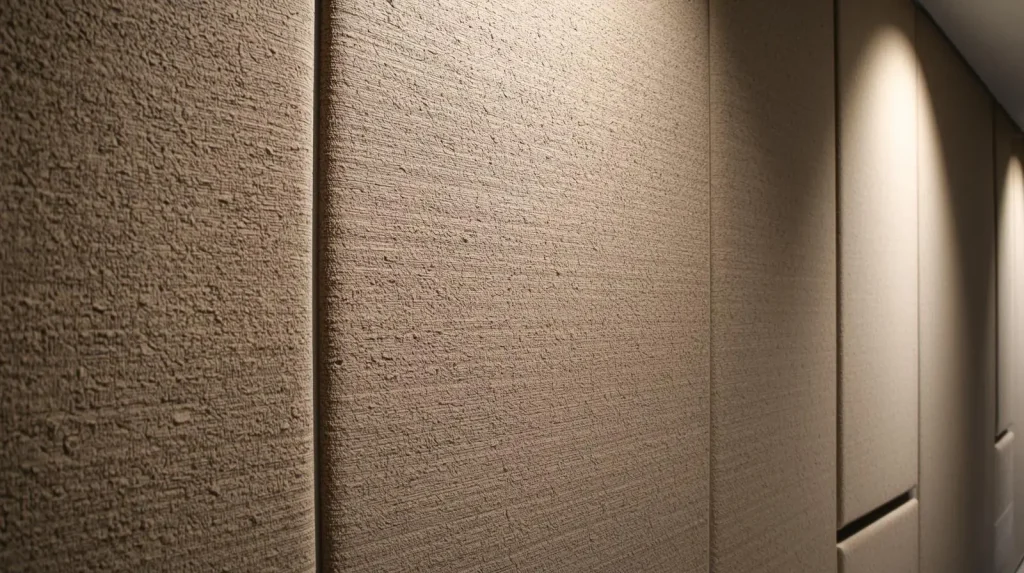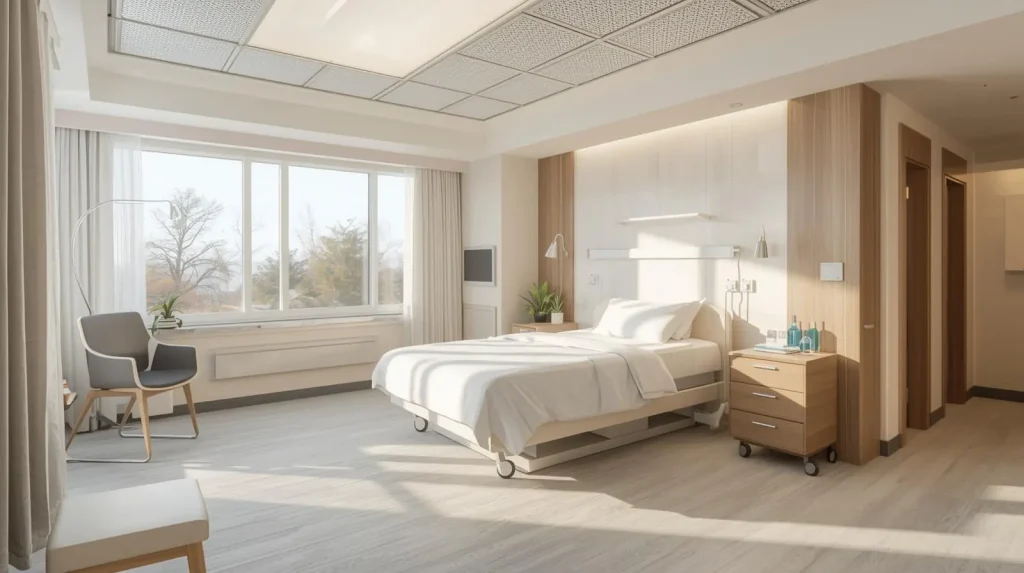Hospitals are meant to be spaces of healing, rest, and recovery. Yet for many patients, hospital environments are filled with unwanted noise from medical equipment, staff conversations, alarms, and visitors. Research has shown that excessive noise in healthcare settings can increase patient stress, disrupt sleep, and even slow recovery times.
Soundproofing for hospitals is not just about comfort, it is directly tied to better health outcomes, staff productivity, and overall patient satisfaction. With growing awareness of patient-centered care, acoustic design has become a critical factor in modern healthcare facilities.
This article explores the importance of soundproofing in hospitals, effective solutions, and best practices to create quieter healing environments.
Why Soundproofing is Essential in Hospitals
Noise and Patient Well-being
Hospital noise often exceeds recommended levels from the World Health Organization (WHO). Constant exposure to sound from alarms, machines, and corridor traffic disrupts patient rest and leads to:
- Increased stress and anxiety
- Poor sleep quality
- Slower recovery rates
- Higher reports of dissatisfaction

Impact on Healthcare Staff
Noise does not only affect patients. Nurses, doctors, and support staff working in noisy conditions face challenges such as:
- Difficulty concentrating
- Communication errors
- Higher stress levels
- Reduced job satisfaction
Effective hospital soundproofing enhances both patient recovery and staff performance.
Key Areas That Need Soundproofing in Hospitals
Not all hospital spaces require the same level of acoustic treatment. Focusing on high-impact areas ensures better outcomes.
Patient Rooms
Private rooms should be sanctuaries for rest. Noise from adjacent rooms, hallways, or equipment must be minimized to promote healing.
Intensive Care Units (ICUs)
ICUs are filled with life-saving equipment, but alarms and machine sounds can overwhelm patients. Acoustic design here balances the need for monitoring with patient comfort.
Operating Rooms
Clear communication among surgical staff is critical. Soundproofing operating rooms reduces external noise interference, improving focus and safety.
Waiting Areas and Corridors
These are high-traffic spaces where conversations, footfall, and background noise accumulate. Acoustic solutions help reduce echo and create calmer atmospheres.
Staff Workstations
Doctors and nurses need quiet zones for reviewing charts, making calls, and documenting care. Reducing distractions supports accuracy and efficiency.

Effective Soundproofing Solutions for Hospitals
Acoustic Wall Panels
Installing acoustic wall panels absorbs sound and reduces echo in corridors, waiting areas, and patient rooms. They can be designed to complement hospital interiors without compromising hygiene standards.
Soundproof Doors and Windows
Specialized doors and windows block noise transfer between rooms and hallways. For patient privacy and rest, these upgrades make a significant difference.
Ceiling Treatments
Acoustic ceiling tiles are one of the most effective ways to control sound in large hospital spaces. They reduce reverberation and help maintain a peaceful environment.
Floor Treatments
Hard surfaces amplify noise. Using sound-absorbing flooring materials like rubber or acoustic vinyl can reduce footstep and trolley noise without sacrificing cleanliness.
White Noise Machines
In certain settings, controlled background noise can mask disruptive sounds. White noise machines are useful in neonatal care units and patient rooms.
HVAC Noise Control
Air conditioning and ventilation systems often contribute to unwanted noise. Installing silencers and vibration dampeners reduces mechanical sound levels.

Design Best Practices for Quieter Hospitals
Plan for Acoustics Early
Soundproofing is most effective when included in the early stages of hospital design and construction. Retrofitting is possible but more challenging and costly.
Balance Safety and Silence
While reducing noise is critical, alarms and alerts must remain audible for staff. The key is achieving balance and clear signals for staff while minimizing disturbance for patients.
Use Zoning Strategies
Separating noisy areas (such as emergency departments) from quiet zones (such as recovery wards) ensures patients are shielded from unnecessary disturbances.
Prioritize Privacy
Soundproofing also protects patient confidentiality. Conversations in exam rooms or consultation spaces must remain private to maintain trust and comply with regulations.

Benefits of Hospital Soundproofing
Soundproofing investments deliver long-term value. Key benefits include:
- Faster recovery rates: Patients heal better in calm environments.
- Improved sleep quality: Quieter rooms support restorative rest.
- Higher patient satisfaction scores: Better experiences translate into stronger hospital reputations.
- Reduced medical errors: Staff can concentrate better with fewer distractions.
- Compliance with standards: Meeting WHO guidelines and local healthcare regulations strengthens credibility.

Cost Considerations and ROI
While hospital soundproofing requires upfront investment, the returns are significant. Hospitals that prioritize acoustics often see:
- Reduced patient complaints
- Shorter patient stays due to faster recovery
- Lower staff turnover from improved working conditions
- Stronger ratings in patient experience surveys
Long-term, the savings from improved outcomes outweigh the initial costs.
Future Trends in Hospital Acoustics
Advancements in materials and design continue to improve acoustic solutions. Some emerging trends include:
- Smart noise monitoring systems that alert staff when sound levels exceed thresholds
- Sustainable acoustic materials that combine soundproofing with eco-friendly performance
- Customizable modular panels for flexible installation and aesthetic integration

As healthcare environments evolve, soundproofing will remain central to patient-centered design.
Conclusion
Soundproofing for hospitals is more than a construction upgrade, it is a vital element of patient care and staff well-being. By reducing noise pollution, hospitals create environments that promote healing, ensure privacy, and improve operational efficiency.
From patient rooms to operating theaters, acoustic design must be prioritized in both new builds and renovations. Investing in soundproofing solutions ultimately leads to faster recovery, happier staff, and higher patient satisfaction.
Hospitals that embrace quiet healing spaces set themselves apart as leaders in patient-centered care.
Looking to improve your facility’s acoustics? Explore professional hospital soundproofing solutions to create a calmer, healthier environment for everyone.

